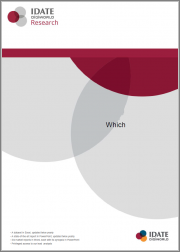
|
시장보고서
상품코드
1292381
조직 성장 전반에 걸친 생산성 측정Measuring Productivity Across Organizational Growth |
||||||
이 IDC Perspective에서는 조직이 디지털 준비 상태와 일반적인 생산성 측정 및 새로운 생산성 측정 간의 관계를 자체 평가할 수 있는 모델을 소개합니다. IDC 조사에 따르면 생산성 구성에 접근하는 방법은 무궁무진하지만, 정확성과 효율성에 중점을 두는 전통적인 방식, 민첩성과 가치 동인에 대한 응고에 중점을 두는 진보적 방식, 검증된 목표와 핵심 결과(OKR)를 지원하는 핵심 성과 지표(KPI)에 대한 환경에 대한 개별화된 기여도를 집계하는 고급 방식 등 크게 3가지 범주로 구분할 수 있습니다. "많은 조직이 기존의 작업 기반 지표를 넘어 생산성을 재정의하기 위해 고군분투하고 있는 지금, 디지털로 정의된 업무의 미묘한 차이를 포착하기 위해서는 새롭고 보다 총체적인 업무 방식이 등장해야 한다는 것은 분명합니다. 일부 기능에서 업무 자동화가 가속화된다고 해서 반드시 앵커 측정값을 변경해야 하는 것은 아니지만, 조직은 더 발전된 평가가 가장 가치 있는 부분을 평가하도록 유도할 것입니다."라고 Future of Work의 Research Vice President인 Amy Loomis는 말했습니다.
주요 현황
상황 개요
- 세 가지 수준의 조직 준비도
- 기존 조직에 대한 세부 정보
- 진보적 조직에 대한 자세한 내용
- 선진 조직에 대한 세부 정보
- 업계 예시
- 생산성을 측정하는 수단의 진화
- 주요 공급업체가 각 준비 단계를 지원하는 방법
- 주요 공급업체가 각 준비 단계를 지원하는 방법
- 기존 업무 모델의 생산성 과제와 이점
- 프로그레시브 업무 모델의 생산성 과제와 이점
- 진보적 업무 모델의 생산성 과제와 이점
테크놀러지 구입자에 대한 어드바이스
- 기존 조직을 위한 다음 단계
- 진보적인 조직을 위한 다음 단계
- 선진 조직을 위한 다음 단계
- 관련 연구
- 시놉시스
This IDC Perspective introduces a model for organizations to self-assess the relationship between their digital readiness and common and new productivity measures. IDC research shows that although there are infinite ways to approach productivity constructs, three broad categories coalesce: traditional focuses on precision and efficiency; progressive focuses on agility and coagulation around value drivers; and advanced focuses on aggregated individualized contributions to the landscape for key performance indicators (KPIs) in support of qualified objectives and key results (OKRs). "At a time when many organizations are struggling to redefine productivity beyond traditional task-based metrics, it is clear that new, more holistic ways of working must emerge to capture the nuances of digitally defined work," says Amy Loomis, research vice president, Future of Work. "Accelerated automation of tasks in some functions will not necessarily require anchor measures to change but it will drive organizations to assess where more advanced assessments will be most valuable."
Executive Snapshot
Situation Overview
- Three Levels of Organizational Readiness
- Details on Traditional Organizations
- Details on Progressive Organizations
- Details on Advanced Organizations
- Industry Examples
- Evolving Means of Measuring Productivity
- How Key Vendors Support Each Stage of Readiness
- Challenges and Benefits Across the Readiness Spectrum
- Productivity Challenges and Benefits for Traditional Work Models
- Productivity Challenges and Benefits for Progressive Work Models
- Productivity Challenges and Benefits for Advanced Work Models
Advice for the Technology Buyer
- Next Steps for Traditional Organizations
- Next Steps for Progressive Organizations
- Next Steps for Advanced Organizations
- Related Research
- Synopsis

















